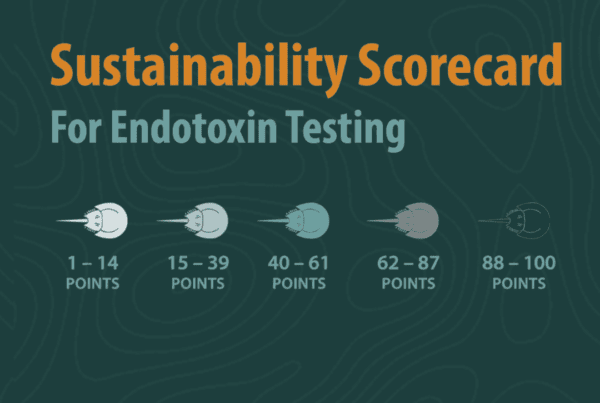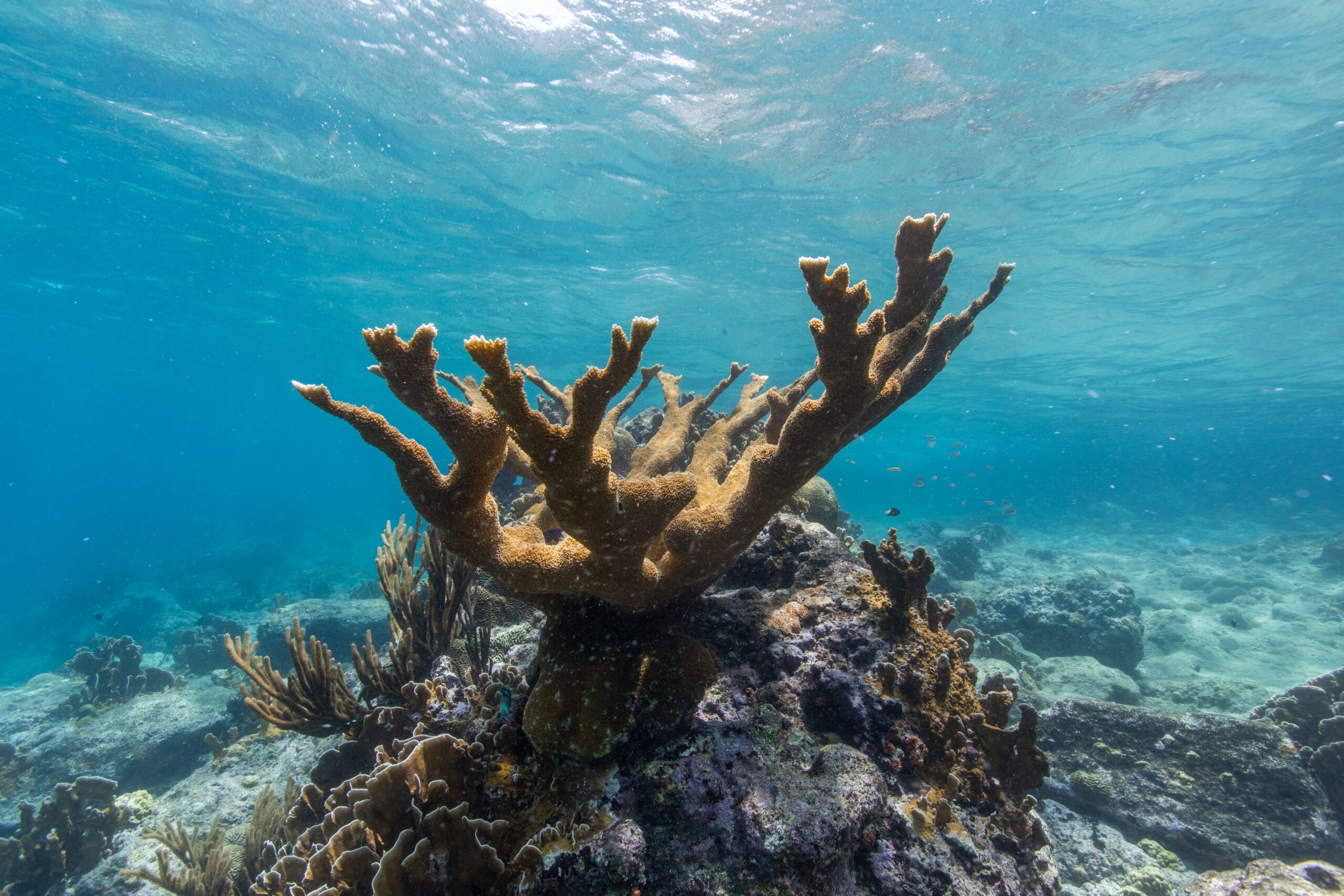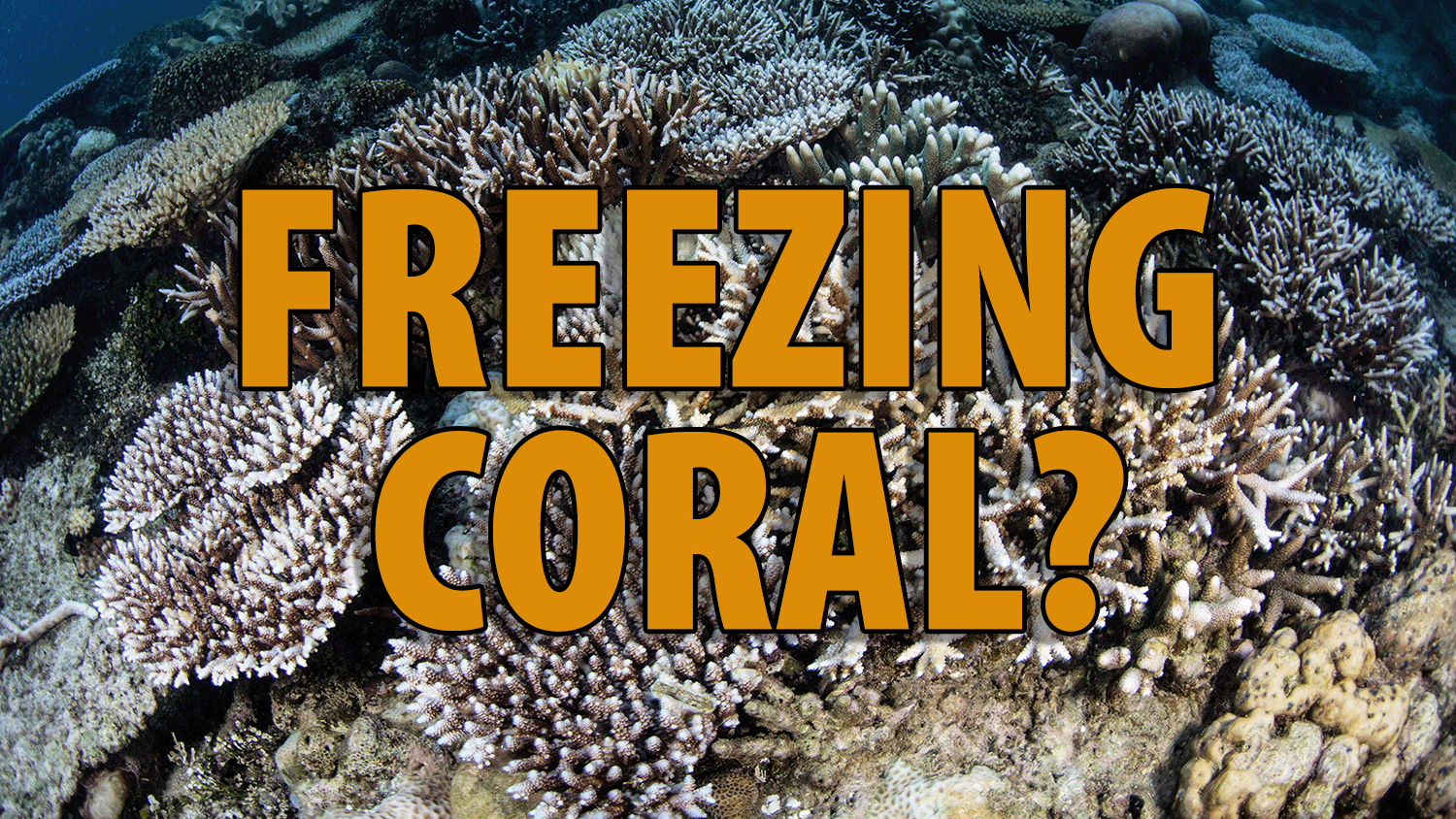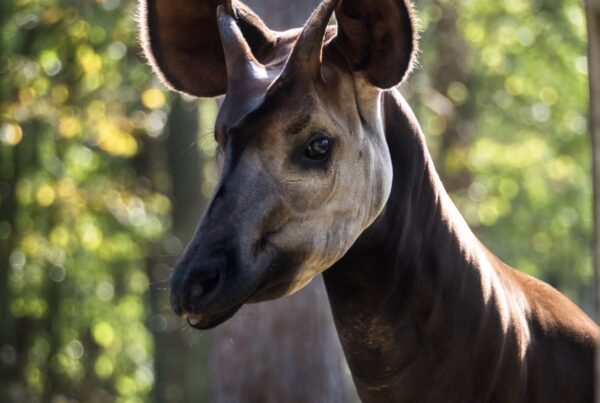Elkhorn Coral | Roshan Patel, Smithsonian’s National Zoo and Conservation Biology Institute
Smithsonian’s National Zoo and Conservation Biology Institute (NZCBI) researchers have achieved a breakthrough in the fight to save the world’s coral reefs from climate change annihilation, and it may further the goal of cryopreserving human organs.
In a paper published today, Aug. 23, in Nature Communications, Mary Hagedorn and E. Michael Henley, research scientists at NZCBI, and colleagues Matt Powell-Palm, from Texas A&M University and Boris Rubinsky at the University of California, Berkeley, describe the first successful technique for cryopreserving and reviving entire coral fragments. This milestone was conducted in Kaneohe Bay, Hawaii, at the Hawaii Institute of Marine Biology and heralds a new age for cryopreservation and coral conservation because the coral fragments are among the most complex biological systems ever successfully ushered through the cryogenic cooling and thawing process.
This proof-of-concept, funded by conservation organization Revive and Restore, opens the door to collecting and preserving coral fragments easily and rapidly at an urgent moment for coral worldwide.
“This process holds enormous promise to conserve the biodiversity and genetic diversity of coral. If we can scale this up and refine the post-thaw husbandry, we will be able to work year-round rather than just a few days during spawning seasons. If we can do that, this will be a really viable process that changes how we see the security of corals going forward.”
Dr. Mary Hagedorn
Research scientist at Smithsonian’s National Zoo and Conservation Biology Institute
Recent climate models estimate if greenhouse gas emissions continue unabated, 95% or more of the world’s corals could die by the mid-2030s. This leaves precious little time to safeguard their estimated $10 trillion annual economic value or the innumerable other marine species that rely on corals for their livelihood.
NZCBI is a leader in the field of coral cryopreservation and is a member of the Coral Biobank Alliance—a global network of coral experts preserving corals for restoration and research that aims to collect and store genetic material from all known species of corals by 2030. Globally, the collection currently includes sperm cells from more than 50 species and live corals from over 200 species.
Current coral cryopreservation techniques rely largely on freezing sperm and larvae, which can only be collected during fleeting spawning events, which occur only a few days a year for a species. This creates a logistical challenge for researchers and conservationists, and it limits the speed with which coral species can be successfully cryo-banked. To complicate matters further, warming oceans and increasingly frequent marine heatwaves mean corals can be biologically stressed such that their reproductive material is too weak to stand up to the rigors of being frozen and thawed.
Watch the video:Revive & Restore’s Dr. Bridget Baumgartner explains new technological breakthroughs in coral preservation technologies and why they are so exciting for ocean conservation.
With these limitations in mind, Hagedorn and her colleagues started their work to cryopreserve and revive entire fragments of coral in 2019. The small fragments of coral used in this study feature about 20 individual coral polyps embedded in a calcium carbonate skeleton. This large mass of tissue with tens of thousands of cells and a skeleton is far more complex to cryopreserve than a single cell, such as a sperm. To get around this problem, Hagedorn collaborated with Powell-Palm and Rubinsky focusing on a process called isochoric vitrification.
This technique minimizes the toxicity of the cryopreservation solution and prevents the formation of ice by placing the biological material inside a rigid aluminum chamber. When researchers seal the coral fragment inside the solution-filled chamber and rapidly cool it with liquid nitrogen, any water inside tends to not expand and form ice crystals that can damage tissue. If ice starts to form, the unyielding walls of the aluminum chamber restrict its growth. Instead of ice formation, isochoric vitrification preserves the coral polyps in a glass-like state that avoids damage to their delicate cells.
But getting isochoric vitrification to work with corals was not without its challenges. For example, researchers discovered the corals needed to be bleached prior to cryopreservation. In nature, coral bleaching occurs when corals get so stressed—usually from excessive heat—they eject the photosynthetic algae with which they normally have a healthy symbiotic relationship and begin to starve. But during cryopreservation the coral’s symbionts created problems because the symbionts reacted differently to the process than the corals, creating damaging pockets of ice. To bleach the corals prior to cryopreservation, the team used a combination of menthol and intense light. Somewhat counterintuitively, the team noted in the lab the bleached corals appeared quite healthy, possibly because they ingested their damaged symbionts, rather than expelling them.
Hagedorn and her colleagues tested the isochoric vitrification technique with thumbnail sized fragments of the finger coral (Porites compressa) from Hawaii. After vitrifying the bleached coral fragments inside their aluminum chambers by immersing them in a bath of liquid nitrogen, the chambers were warmed in a 27 degree Celsius water bath for two minutes. Once the chamber warmed up, the fragments were transferred to seawater and allowed to recover. When assessing the health of the revived corals, Hagedorn and her colleagues found the rate of oxygen consumed by the vitrified-thawed corals was comparable to those that were never cooled. The team stopped their oxygen measurements at 24 hours because of a desire to separate the success of the vitrification process from husbandry issues that will require ongoing refinement.
Henley and the collaborative team are currently working on the problem of how to keep corals alive beyond 24 hours post-thaw, and the team is exploring the use of antibiotics, antioxidants and probiotics to bolster the corals’ microbiomes and help them survive.
“Our goal is to cryopreserve as many species of coral as possible by 2030. If this is successful, we may be able to do that. At a time when climate change is moving so fast, this gives us an amazing ability to stop time here in the 2020s.”
Dr. E. Michael Henley
Research scientist at Smithsonian’s National Zoo and Conservation Biology Institute
NZCBI’s coral conservation research program aligns with United Nations Sustainable Development Goals and is part of the Smithsonian’s “Life on a Sustainable Planet” initiative to collect new data about the changing planet, implement holistic and multi-scale approaches to environmental conservation and educate the world about why and how sustainable solutions to climate change can benefit people and nature.
About the Smithsonian’s National Zoo and Conservation Biology Institute
The Smithsonian’s National Zoo and Conservation Biology Institute (NZCBI) leads the Smithsonian’s global effort to save species, better understand ecosystems and train future generations of conservationists. Its two campuses are home to some of the world’s most critically endangered species. Always free of charge, the Zoo’s 163-acre park in the heart of Washington, D.C., features 2,100 animals representing 400 species and is a popular destination for children and families.
At the Conservation Biology Institute’s 3,200-acre campus in Virginia, breeding and veterinary research on 250 animals representing 20 species provide critical data for the management of animals in human care and valuable insights for conservation of wild populations. NZCBI’s more than 300 staff and scientists work in Washington, D.C., Virginia and with partners at field sites across the United States and in more than 30 countries to save wildlife, collaborate with communities and conserve native habitats. NZCBI is a long-standing accredited member of the Association of Zoos and Aquariums.
About Life on a Sustainable Planet
Life on a Sustainable Planet is the Smithsonian’s initiative to collect new data about our changing planet, implement holistic approaches to environmental conservation and educate the world about why and how sustainable solutions to climate change can benefit people and nature. Life on a Sustainable Planet uses the Institution’s vast scientific resources across its global network of research centers to produce, curate and communicate strategies for adapting to and mitigating the impacts of climate change.
The Institution will also pioneer new technologies to collect environmental data, develop new platforms to analyze and share data and work with partners and communities to inform conservation action. Life on a Sustainable Planet is part of the Smithsonian’s commitment to working with communities to promote equitable, sustainable and resilient ecosystem solutions to build a more sustainable future for all.
About Revive and Restore
Revive and Restore is the leading wildlife conservation organization promoting the incorporation of biotechnologies into standard conservation practice. Its goal is to revive biodiversity and restore ecosystems for millennia to come. This coral cryo-preservation project was funded as part of their Advanced Coral Toolkit, a program to develop and field new biotechnologies with the potential to benefit coral resilience and restoration efforts.
About University of California, Berkeley’s College of Engineering
Recognized globally as a leader in engineering education, the University of California, Berkeley’s College of Engineering has a long history of impact and innovation. Regularly ranked among the top three colleges of engineering in the country, Berkeley Engineering boasts 22 undergraduate and graduate academic programs and more than 50 research centers and institutes. Among its distinguished active and emeriti faculty are 74 members of the National Academy of Engineering and six Turing Award winners. Its researchers benefit from the Bay Area’s culture of innovation and entrepreneurship, translating discoveries into game-changing advances that help improve society.
About the Texas A&M University College of Engineering
Our researchers collaborate with Texas A&M University College of Engineering’s three state agencies and many external partners to move groundbreaking research from academia to the marketplace. We push the boundaries of what is possible while ensuring safety, driving productivity and impacting society. With more than 750 faculty members and 24,000 students, the College of Engineering is the second-largest engineering school in the country. In U.S. News & World Report rankings, the college is ranked sixth in graduate programs (2024 rankings) and seventh in undergraduate programs (in 2023 rankings) among public institutions.
More news from Revive & Restore








